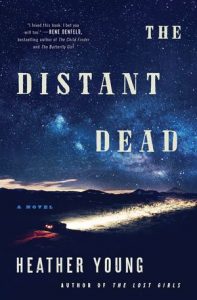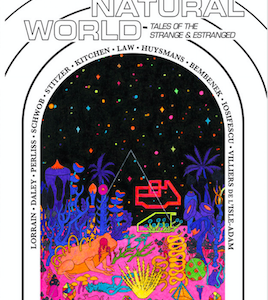I have written two novels, The Lost Girls and The Distant Dead. Both are mysteries, but neither follow the classic mystery format. Instead they are dual narratives with chapters alternating between two time periods: one before and one after the death at the heart of the mystery. I chose this format because it allowed me to explore why the murder happens in a way the standard mystery format does not.
In the classic mysteries I love—those by Louise Penny, P.D. James, and many others—a dead body turns up at the beginning of the story, and the plot is propelled by the sleuth’s search for the murderer. The pursuit of clues builds to a climax where the crime is solved, the murderer is confronted, and justice is served. A mystery like this tells the reader why the murder happened, of course. But in its purest form, that’s all it can do: tell the reader. The very nature of a mystery requires the murder to take place off the page. It reveals motive through clues, character behavior, and sometimes a confession. A good writer will also show, through dialogue and scene, the killer’s character so that after they’re exposed the reader understands their motives. But again, all of this dialogue and scene happens after the body is already dead.
In my books, I wanted to lay out, in narrative form, the slowly building events and complicated relationships that led someone to set a math teacher on fire, or kill a six-year-old girl at a summer house. I also wanted to show the actual crime itself, something traditional mysteries typically don’t do or do only through flashback.
If I did that and nothing else, you’d call my books thrillers. “Mystery” and “thriller” are often used interchangeably, but in fact they are mirror images of each other. A mystery starts with an act of violence committed by someone unknown; a thriller is the story that culminates in that act of violence. But I also love writing about the aftermath of a violent crime. How does it impact the people who knew the victim? How do investigators solve the crime? That’s juicy stuff, too. So I decided to write a thriller and a mystery in one, with a separate timeline for each.
This is not an original idea. The Secret Place, by Tana French, The Weight of Blood, by Laura McHugh, Everything I Never Told You, by Celeste Ng, and The Lake House by Kate Morton, just to name a few, have chapters alternating between before and after the mysterious death at their center. But it’s not easy to pull off. As I wrote The Lost Girls and The Distant Dead I gave a lot of thought to what makes these stories succeed or fail, and I’ve come up with the following five suggestions.
(1) Give Both Stories the Same Themes
A dual narrative might take place in vastly different times and places. It almost certainly will have different protagonists. To bind it together as a complete story requires more than a shared murder victim; the stories need to be linked thematically.
Tana French does this brilliantly in The Secret Place, a Dublin Murder Squad procedural interwoven with the story of the months before a sixteen-year-old boy’s murder at a boarding school. The teenaged girls in the “past” story are desperate for acceptance by their peers, which leads them to do all sorts of things to protect their status, from framing each other and bribing each other to committing actual murder. In the procedural chapters the detective protagonist sees the case as a chance to break into the Murder Squad, an elite group of detectives with clear parallels to the “queen bees” at the girls’ boarding school. He, too, will be tempted to do some shady things to get in with the “cool” crowd. This common theme about the need to belong binds French’s two narratives tightly together, and by exploring the same theme in different settings she makes it into something bigger: our need to belong isn’t just something that afflicts us in adolescence, it follows us all our lives.
(2) Give Both Protagonists Equally Strong “Wants”
One of the most common flaws in dual narratives is that one story is more compelling than the other. This is an especially high risk in dual narrative mysteries, because the passion-infused story of what led to the murder can easily overshadow the procedural story about solving the crime. When this happens, it’s almost always because of an imbalance of “wants.” It’s hard for a sleuth to compete with characters who want something badly enough to kill for it if all he or she wants is to solve the case. The sleuth needs to want something more, something deeply emotional and connected to the crime.
The mystery at the heart of Laura McHugh’s The Weight of Blood is a teenaged girl’s murder, and the “past” story is about what happened to another girl sixteen years before. The sleuth is a friend of the victim and the daughter of the woman who disappeared earlier. Because of her emotional connection to the case, the reader is as invested in her story as in the story of her mother in the past, and because McHugh has done it right, the past story is connected to the murder of the young girl that starts it all.
In another example, the detective in Kate Morton’s The Lake House is placed on leave because she cut some corners in a case she’d gotten too close to. While on leave she solves a cold case about a baby who disappeared seventy years before. The case that got her in trouble involved an abandoned child, and she herself gave a child up for adoption, so her issues around child abandonment are the perfect counterweight to the emotions that drive the characters in the chapters that take place in the past.
(3) Create Suspense in Your Past Narrative
One inherent problem with the dual narrative mystery is that the reader knows who the murder victim is early on. This makes it hard to build tension in the “past” narrative. How can there be any suspense if the reader already knows the math teacher is going to be burned to death on March 14?
The answer is that there are different kinds of suspense. There’s the more common kind, where you don’t know what’s going to happen, and another, rooted in dread, where you know exactly what’s going to happen. While it isn’t a dual narrative, my favorite recent example of this is Celeste Ng’s Little Fires Everywhere. It opens with a house on fire. Ng could have moved forward from that and written a traditional mystery, following the arson investigation and the suspects maneuvering and lying until the culprit is found. Instead she jumps back and shows us the months leading up to the fire. Tension hovers over every page, and it all comes from knowing the house is going to burn in the end. That’s the kind of suspense a writer should lean into in the pre-crime part of a dual narrative.
One effective way to increase this anticipatory tension is to humanize the murder victim. This is an advantage of the dual narrative format: in the classic mystery the victim is already dead, so the writer can only show him through the recollections of other characters. In a dual narrative the writer has half the book to show him as a living person, with hopes and dreams that will die with him. If this is done well, readers will get a pit in their stomach as the victim’s inevitable fate draws near.
It also helps to lean into the foreknowledge, as Tana French does in The Secret Place. She doesn’t pretend that we don’t know Chris Harper is doomed. She shoves it in our faces by telling us, in every past chapter, exactly how long he has left to live. These passages act like a ticking clock counting down the last days of a heart-wrenchingly normal boy’s life, and the tension is excruciating.
(4) Play With Clues and Red Herrings Across the Timelines
One of the most rewarding things about writing a dual narrative mystery is that it allows a writer interesting ways to play with clues and red herrings. A chapter in the past, where something significant happens, might be followed by one where witnesses lie to the sleuth about it. Or readers can be led to believe one thing in the procedural part of the story only to see, a few chapters later, a scene from the past that shows they were wrong.
The challenge lies in calibrating the timing of these reveals and feints. The purpose of the “past” story is to reveal the truth about the crime, while the mystery timeline tries to hide it for as long as possible. This requires artful planning, and devising ways to obscure the truth in the “past” section that don’t feel overly manipulative. One sure way for a reader to lose trust in a writer is for her to reread a scene set before the murder, in the storyline where the writer has made an implicit promise of honesty, only to find out that the writer straight-up lied to her.
(5) Make Sure the Pacing is Consistent
Mirroring the two stories in terms of pacing, rising action, and climax is another way to make the book work better as a whole.
For example, Chapter Two of The Secret Place introduces four teenaged girls one by one as they arrive at their boarding school at the beginning of the term. In Chapter Three the detective interviews each girl, one after the other. Having these chapters side by side highlights the contrast between the girls before and after the murder, and is a terrific example of how effective parallel pacing can be.
These parallel moments can serve you well in other ways, too. In the middle of The Secret Place, one of the high school girls has a perfect moment with her friends, and it’s an important inflection point for her. In the next chapter the desperately striving detective has a moment of perfect synchronicity with the Murder Squad detective whose approval he’s desperate to win. This moment acts as an echo, amplifying the moment with the girls just a few pages before, and incidentally reinforces the stories’ common theme.
***
There are other ways to strengthen a dual narrative, including more prosaic techniques such as using different narrative tenses for each timeline (first person present versus third person past, for example), but I believe the five listed above are essential to writing a novel that is a coherent and unified whole despite being told in two parts. Dual narratives are challenging, but if you choose to try one, I think you’ll find it’s a rewarding way to tell a story, and gives you a chance to lean into different aspects of storytelling than if you were writing a classic mystery or thriller alone.


















